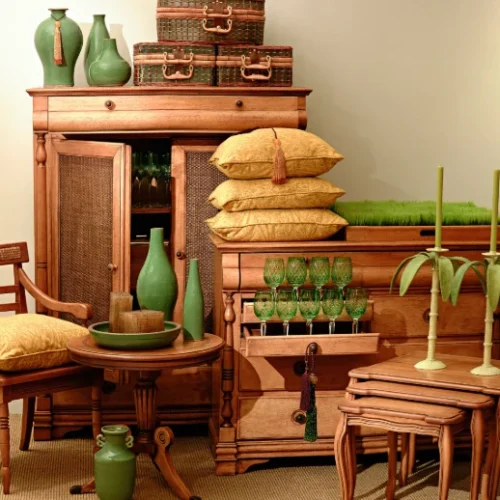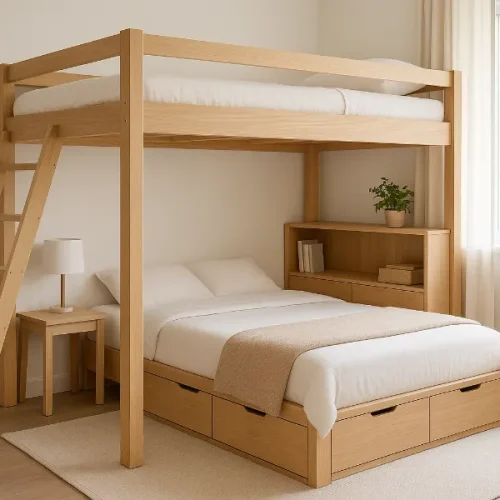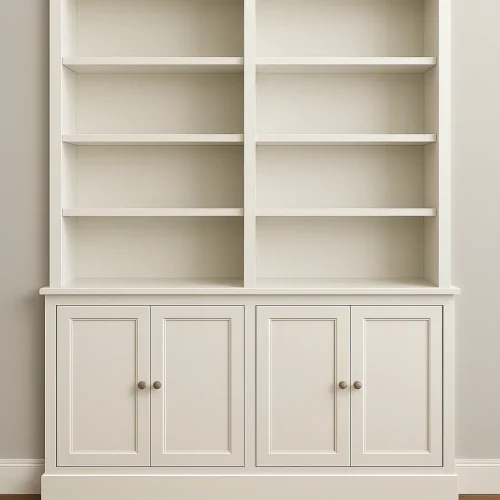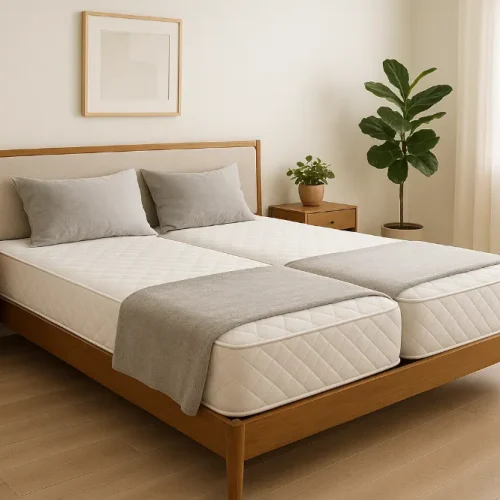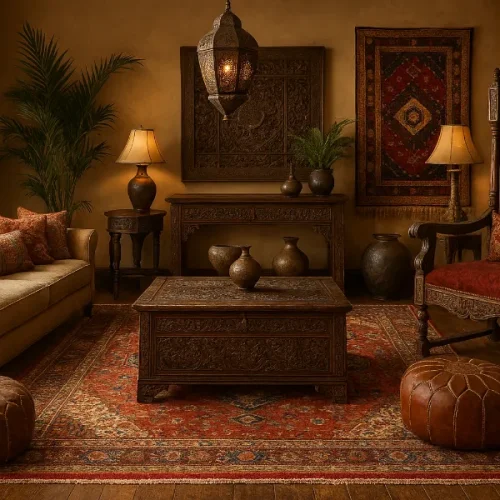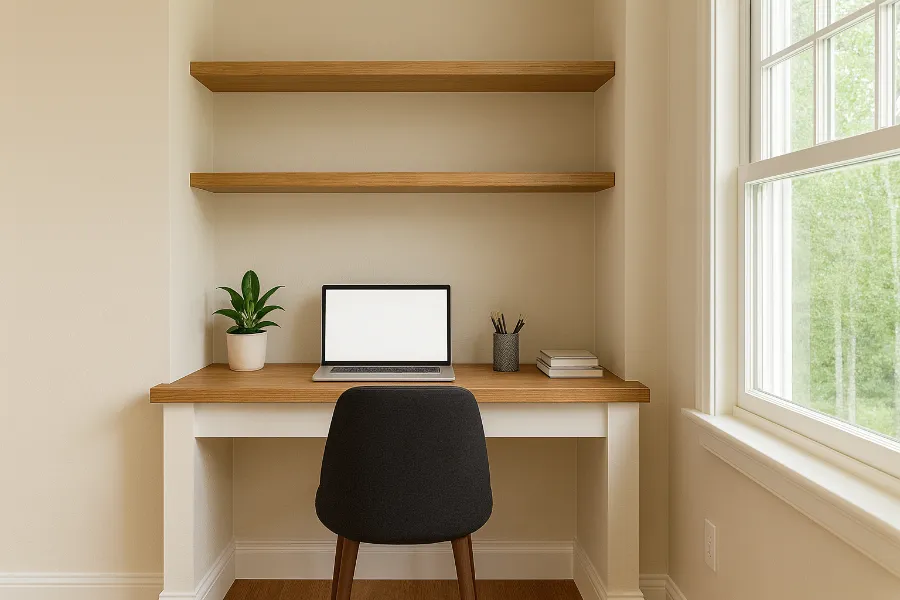
The built in desk alcove is one of the smartest ways to make the most of unused space in your home. Whether you’re working remotely, organizing family life, or simply craving a neat place to focus, alcove desks offer a practical yet stylish solution. By transforming a small niche or recessed wall into a workspace, you not only maximize square footage but also create a personalized corner that reflects your lifestyle. And the best part? These setups can be as budget-friendly or luxurious as you want.
If you’ve ever stared at that awkward corner under the stairs, the empty nook in your living room, or the shallow recess in your bedroom and thought, “I should do something with this,” a built in desk alcove is your answer. Let’s explore how you can plan, build, and style one that fits seamlessly into your home.
What is a Built in Desk Alcove?
A built in desk alcove is a workspace designed into a recessed area of a room. Think of it as a made-to-measure office nook tucked neatly into a space that might otherwise go unused—such as a hallway, beside a chimney breast, or in an under-stair cavity. Unlike bulky freestanding desks, an alcove desk blends into your existing layout, almost like it’s always been part of the architecture.
Some designs are minimal—just a simple floating shelf with a chair—while others are elaborate, with cabinets, shelves, and even lighting built right in. This versatility makes alcove desks ideal for homes of all sizes.
Benefits of a Built in Desk Alcove
Space-Saving Advantages
In compact homes or apartments, every inch matters. By slipping a built in desk alcove into a niche, you gain a dedicated office without sacrificing floor space. Instead of cluttering your living area with another piece of furniture, you’re simply adapting space you already have.
Enhanced Organization and Storage
Alcove desks can be paired with shelves, cabinets, and drawers, turning a small footprint into a powerhouse of storage. Floating shelves above your desk, pull-out trays, and slim cabinets below help keep clutter off the work surface.
Aesthetic Appeal and Customization
Because alcoves are built-in, they can be tailored to your home’s style. From modern plywood finishes to traditional painted cabinetry, the design can be as bold or as subtle as you like. A pop of wallpaper or a bold paint color inside the alcove instantly elevates the space.
Productivity and Ergonomics
A defined workspace helps set boundaries between “work” and “home.” Even if you live in a studio apartment, a built in desk alcove creates a psychological separation that boosts productivity. Add an ergonomic chair and proper lighting, and you’ve got a workstation that’s as comfortable as it is functional.
Planning Your Built in Desk Alcove
Assessing Available Space and Dimensions
Before grabbing a saw, measure the alcove’s width, depth, and height. Standard desk depths range from 18–24 inches, but if your alcove is shallower, you can opt for a narrower surface suited to laptops and light work. Also consider headroom for shelving above.
Choosing the Right Location
Alcoves pop up in all sorts of places: under stairs, between closets, beside fireplaces, or at the end of a hallway. Ideally, choose a location with minimal foot traffic and good natural light.
Budgeting for Materials and Tools
Costs can vary widely. A DIY floating desk made from MDF or plywood might cost under £100, while a bespoke fitted alcove desk with cabinetry could run into the thousands. Set your budget early and decide which features matter most—storage, finishes, or lighting.
Materials and Tools Needed
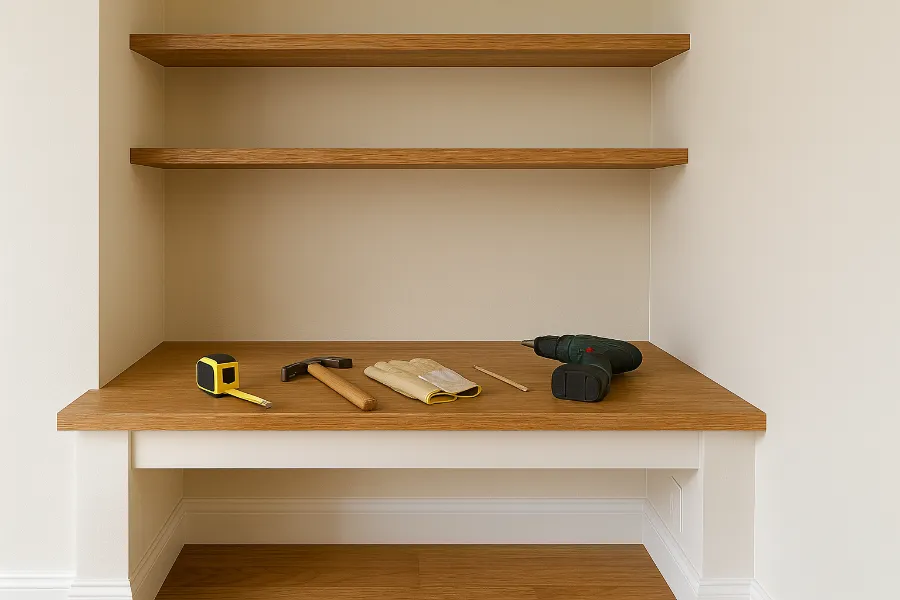
Essential Materials
- Plywood, MDF, or solid wood for the desk top
- Screws, brackets, or cleats for support
- Paint, stain, or varnish
- Shelf boards or cabinets (optional)
Recommended Tools
- Tape measure
- Saw (jigsaw or circular)
- Drill and screwdriver
- Spirit level
- Sandpaper
- Paintbrushes or rollers
Optional Accessories
- LED strip or recessed lighting
- Cable management grommets
- Drawer units
- Decorative wall panels or wallpaper
Step-by-Step DIY Guide to Creating a Built in Desk Alcove
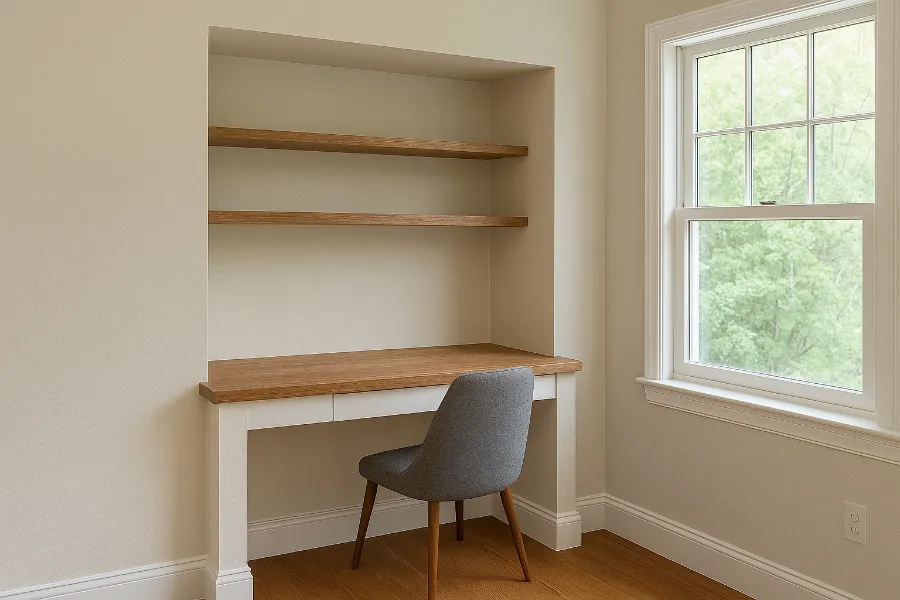
1. Measure and Mark the Alcove
Start by measuring the alcove’s width and marking your desk height. A comfortable desk height is around 28–30 inches, but adjust for your chair and personal comfort.
2. Cut and Prepare Materials
Cut your desk surface to size, allowing a snug fit against the alcove walls. Sand the edges smooth and apply your chosen finish—paint, stain, or a protective varnish.
3. Install Support
For strength, mount wooden cleats or sturdy brackets on the side walls of the alcove. Use a level to ensure everything is straight before attaching the desk top.
4. Secure the Desk Surface
Lay your desk surface onto the supports and secure it with screws. Double-check for stability before adding any weight.
5. Add Shelves and Storage
Install floating shelves above for books and office supplies. You can also add slim cabinets or filing drawers below if space allows.
6. Add Finishing Touches
Style your alcove with a desk lamp, framed art, plants, or personal décor. This makes the space inviting and encourages you to actually use it.
Design Ideas and Inspiration
- Under-stair alcove desks – Perfect for tight homes; turn wasted space into a work zone.
- Kitchen alcove desks – Tuck a workstation into an unused corner or pantry niche.
- L-shaped alcove desks – Wrap around two walls for extra workspace.
- Hidden alcove desks – Fit a desk into a cupboard with doors to hide mess at day’s end.
- Minimal floating alcove desks – A single shelf desk with no bulk, great for apartments.
Tips and Tricks for Success
- Use vertical space: add shelving all the way up to the ceiling.
- Ensure stability with strong wall anchors or cleats.
- Personalize with wallpaper or accent paint inside the alcove.
- Keep cords tidy with grommets or cable trays.
Common Mistakes to Avoid
- Skipping accurate measurements—nothing derails a project faster.
- Using low-quality materials that sag or warp.
- Forgetting about power outlets—plan where your laptop or lamp will plug in.
- Overloading shelves without adequate support.
Maintenance and Upkeep
Clean your alcove desk regularly with a damp cloth. Check screws and brackets periodically to ensure stability. Refresh paint or stain every few years to keep it looking sharp. If your needs change, you can always adapt the setup by adding shelves, lighting, or even converting it into storage.
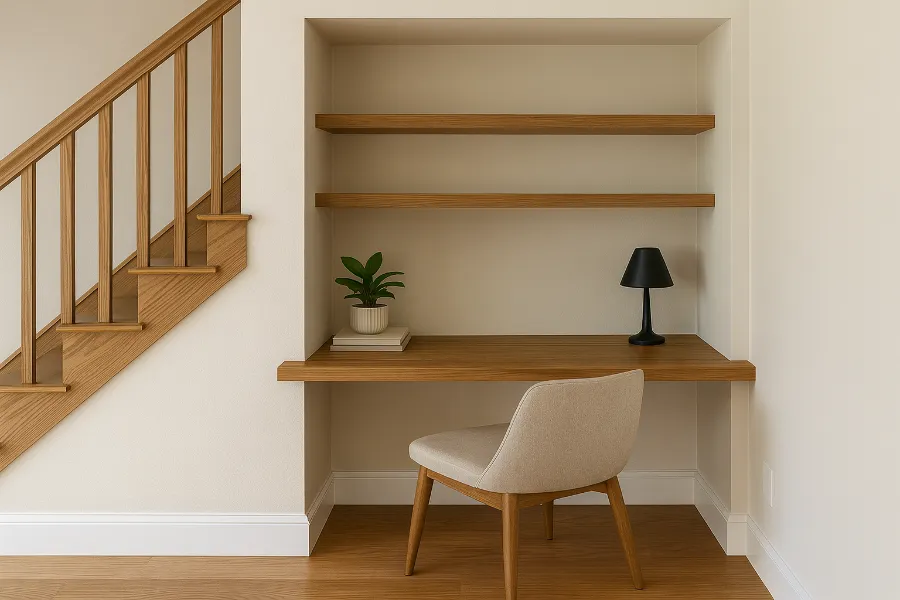
Conclusion
A built in desk alcove is more than just a practical addition—it’s a lifestyle upgrade. By carving out a dedicated workspace in an unused niche, you maximize space, improve productivity, and enhance your home’s design. Whether you DIY a simple floating desk or commission a bespoke cabinetry build, an alcove desk transforms overlooked corners into purposeful, stylish zones.
So, look around your home—where’s your future desk hiding? Roll up your sleeves and start creating your very own alcove workspace today.

